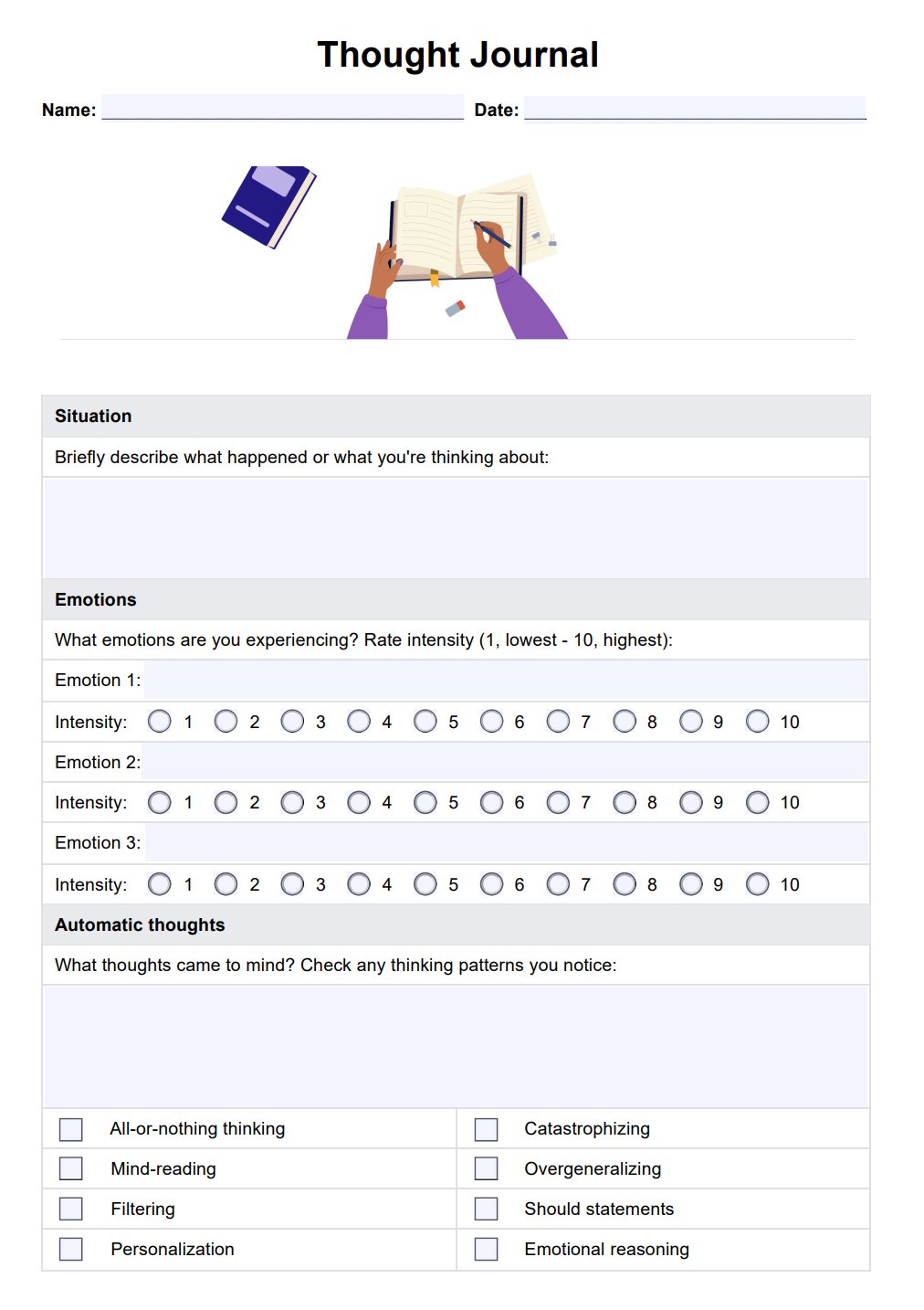Individuals and mental health professionals use a Thought Journal to enhance mental health, self-awareness, and emotional well-being. It aids in identifying and analyzing thoughts, emotions, and behaviors. It benefits personal growth, self-reflection, stress management, anxiety, and other mental health issues.

Thought Journal
Provide clients with a copy of our Thought Journal template to boost their self-awareness and emotional resilience.
Thought Journal Template
Commonly asked questions
A Thought Journal, used whenever needed, aids in documenting and reflecting on thoughts, emotions, and behaviors. Establishing a routine promotes consistent self-reflection and personal growth. It's also beneficial for insight and developing coping strategies during heightened stress, strong emotions, or challenging situations.
A Thought Journal, often template-guided, involves recording thoughts, emotions, and behaviors, identifying emotional triggers, and noting reaction intensity. It aids in understanding the thought-emotion-behavior interplay and developing healthier patterns. It can be used independently or with a mental health professional's guidance.
EHR and practice management software
Get started for free
*No credit card required
Free
$0/usd
Unlimited clients
Telehealth
1GB of storage
Client portal text
Automated billing and online payments











